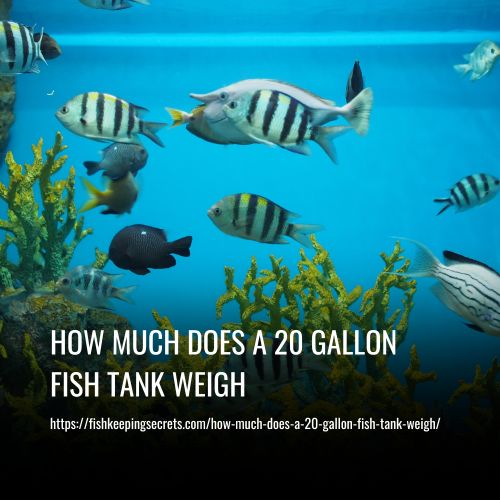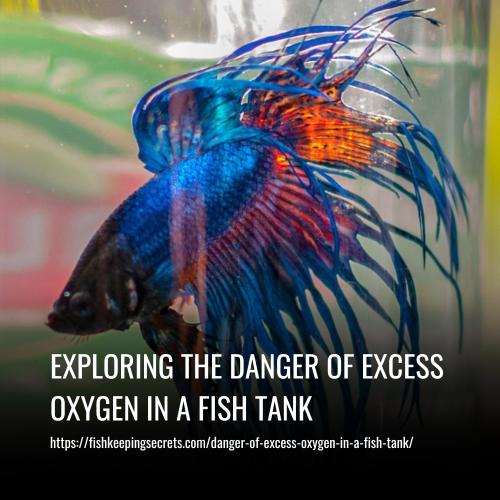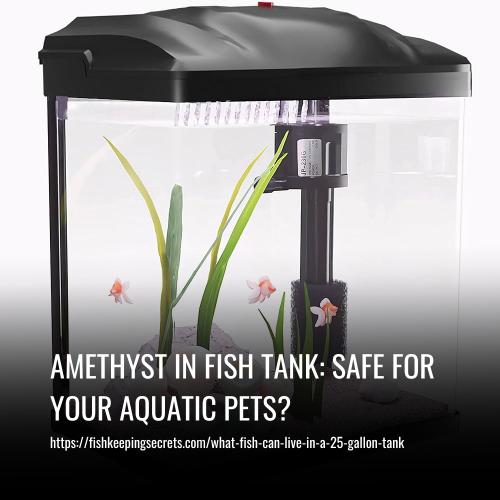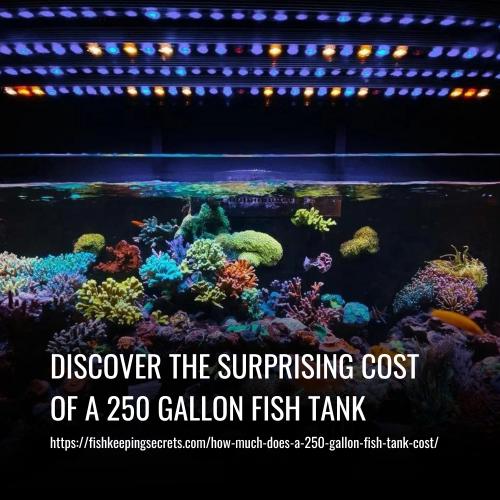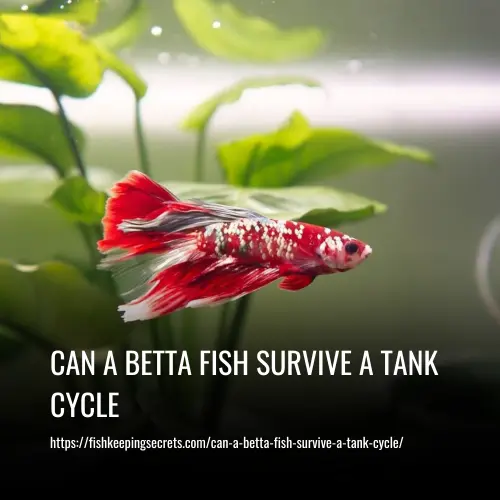What Fish Can Live With Koi In A Tank
This post contains affiliate links. As an Amazon Associate, we earn from qualifying purchases.
Koi fish are a popular choice for outdoor ponds, but many people also wonder if they can be kept in a tank with other fish. Understanding what fish can live harmoniously with koi in a tank is important for creating a balanced and thriving aquatic environment.
Here are some fish that can live with koi in a tank:
- 1. Barbel (Barbus barbus)
- 2. Barbs (Barbus tetrazona)
- 3. Catfish (Siluriformes)
- 4. Goldfish (Carassius auratus)
- 5. Golden Orfe (ILeuciscus idus)
- 6. Tench (Tinca tinca)
- 7. Pleco (Hypostomus plecostomus)
- 8. Sturgeon (Acipenseridae)
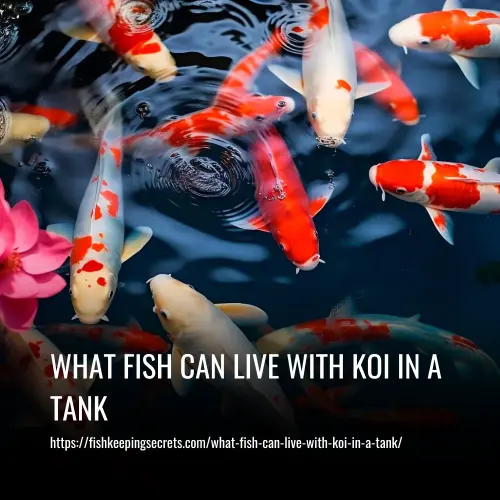
Fish That Can Live With Koi In A Tank
If you are looking to add tank mates for your koi fish, there are a few compatible options to consider.
1. Barbel (Barbus barbus)
Barbel fish are native to Europe and can reach sizes of up to 4 feet, although most are typically 40 inches. They have a similar size to koi fish and exhibit similar characteristics to carp, making them suitable tank mates. They have similar temperature and dietary requirements, making it easier to care for them together.
Barbel fish are bottom feeders and can help keep the aquarium clean by eating excess food left by the koi fish. Due to their large size, it is important to keep them with adult koi fish and provide a large enough tank. Additionally, maintaining a good flow of water is important for their well-being.
2. Barbs (Barbus tetrazona)
Barbs originate from Sumatra and Indonesia and have a slender body, reaching up to three inches in length. They are peaceful and not territorial, making them compatible tank mates for koi and goldfish. Due to their smaller size, they do not require as much water volume. Barbs can live up to 6 years in a well-maintained tank with good water quality and a balanced diet.
They are omnivorous, which is advantageous when kept with koi fish as they have similar dietary requirements. Barbs are also known for their vibrant colors and are available in a variety of shades, adding beauty to the tank, especially with good lighting. It is recommended to keep at least 5 barbs together as they are small schooling fish and thrive in groups.
3. Catfish (Siluriformes)
Many species of catfish can live happily with koi fish in a tank, including Bandit Cory Catfish, Bumblebee Catfish, Columbian Shark, and Iridescent Shark. However, there are some disadvantages to keeping catfish in a tank with other fish. Catfish tend to disturb the bottom of the tank and can be carriers of parasites and diseases. It is important to be careful when keeping Iridescent Sharks with smaller fish, as they may eat them.
4. Goldfish (Carassius auratus)
Goldfish are commonly kept with koi fish in a tank because they have similar characteristics and care requirements. However, it is important to consider the size of the goldfish and koi when putting them together. Large koi fish may eat small goldfish, so it is best to choose larger and stronger goldfish such as Comet and Shubunkin to live with koi fish. Baby or fancy little goldfish should not be put in a tank with koi fish.
5. Golden Orfe (ILeuciscus idus)
Golden Orfe closely resemble Golden Koi fish in appearance and behavior. They are bottom feeders and also swim in the tank or pond surface. Their presence helps keep the tank bottom clean. However, since they are river fish, they require good water quality. If you plan to keep them with Koi fish, it’s crucial to maintain proper filtration and oxygenation of the water. Additionally, Golden Orfe are social fish and should be kept in groups of at least 3 to promote their well-being.
6. Tench (Tinca tinca)
Tench, also known as “doctor fish,” have a unique body shape that resembles doctors. They can grow up to 70 cm in length and weigh up to 7.5 Kg. Tench are peaceful and social fish, making them suitable companions for Koi fish. However, their bottom-feeding behavior can disturb the bottom of the pond or tank. If your tank has fine sand at the bottom, it may not be ideal to house Tench there.
7. Pleco (Hypostomus plecostomus)
Plecos are tropical fish that are known for their hardiness and attractive colors. They can thrive in both ponds and aquariums. However, there are two potential problems associated with keeping plecos. Firstly, they have a tendency to latch onto slow-moving fish, which can be a nuisance. Secondly, their tank temperature needs to be maintained above 55°F, as they cannot thrive in low temperatures. Overall, plecos are a popular choice among fishkeepers due to their aesthetic appeal and adaptability.
8. Sturgeon (Acipenseridae)
Sturgeon are a family of fish that consists of 27 species, with 4 species on the brink of extinction. Catching wild sturgeon is illegal in many places. These ancient fish have an evolutionary history dating back 245 to 208 million years. Sturgeon can grow to be very large in size and weight. While they can coexist with koi in an aquarium, their irregular movement and activity can disturb both the koi and the tank bottom. Therefore, it is important to ensure that you have a large enough tank before introducing sturgeon to your koi setup.
When choosing tank mates for your koi fish, ensure that the fish you select have similar temperature and water parameter requirements. Additionally, monitor their behavior and provide enough hiding places to minimize stress and promote a peaceful environment.
Where Do Koi Prefer to Live in the Aquarium
When it comes to living in an aquarium, Koi fish have their preferences. Here’s what you need to know:
1. Preferred Swimming Area
Koi fish tend to swim in the middle of the pond or aquarium. They prefer this area because it allows for better visibility from the top, making it easier to appreciate their vibrant colors and patterns. Additionally, they may skim the surface of the water to search for insects and their larvae.
2. Water Parameters
While Koi fish are hardy and can withstand varying water conditions, it’s still important to maintain proper water quality. Regular tank maintenance, including the use of a filter, is necessary. You can use a pond testing kit to monitor levels of ammonia, nitrite, and nitrate in the water. The ideal parameters for Koi fish are as follows:
- Ammonia: 0ppm
- Nitrate: 5-20ppm
- Nitrite: 0ppm
- GH (General Hardness): 6-8
- KH (Carbonate Hardness): 5-7
- pH: 6.8 to 7.5
3. Size Considerations
Koi fish can grow quite large, reaching lengths of around 15 to 20 inches. They are much larger than regular goldfish and cannot be kept in standard home aquariums. The minimum recommended size for a pond housing a group of juvenile Koi is 400 gallons. If you plan to keep other fish, such as goldfish or golden orfes, in the same pond, it should be increased accordingly.
4. Behavior Toward Other Fish
Koi fish are known for their peaceful and friendly nature. They do not exhibit aggressive behaviors and do not fight or nip at other fish. While they may consume small snails, crustaceans, or small fish as part of their natural diet, this is not driven by aggression. Koi fish tend to feel safer and more comfortable when kept in pairs or groups.
Understanding and providing for these preferences and needs will help ensure that your Koi fish thrive and remain happy in their aquarium or pond.
The Benefits of Having Tank Mates for Koi in Your Aquarium
Having tank mates for koi in your aquarium offers several benefits:
1. Comfort
Koi feel safer and less stressed when they have other fish around them. They enjoy being in the company of their own kind or even different types of fish. This mimics their natural environment and allows them to group together just like they would in the wild.
2. Variety
Adding other fish to the tank with koi enhances the overall visual appeal. It brings more colors and diversity to the pond, especially in a natural-styled setup. This makes observing and enjoying the pond a more exciting and engaging experience.
Things to Consider Before Selecting Koi Tank Mates
When choosing tank mates for your koi, there are several factors to consider to ensure compatibility and a harmonious tank environment.
1. Non-Aggressive Behavior: Select fish species that are known for their peaceful nature and avoid aggressive fish that may attack or intimidate the koi. Social fish that can coexist peacefully with koi are ideal choices.
2. Similar Size: Choose fish species that are similar in size to your koi. This helps prevent any size-related conflicts or potential injury to smaller fish.
3. Temperature Compatibility: Ensure that the selected fish species can thrive in the same temperature range as koi or can adapt to the ambient temperature conditions suitable for koi.
4. Care Requirements: Consider the care needs of the selected fish species. Avoid choosing fish that require significantly more care or specialized conditions than koi, as it may be challenging to meet their specific demands.
5. Non-Competitive Feeders: Select fish species that do not compete with koi for food. This helps ensure that all fish in the tank receive adequate nutrition and prevents food-related conflicts.
6. Size Matching: Stock larger fish with large koi and smaller fish with smaller koi. This helps maintain a balanced environment and prevents larger fish from potentially injuring or intimidating smaller koi.
7. Bottom Feeders: Choosing fish species that are bottom feeders can be beneficial. They help keep the tank clean by consuming leftover food and debris that may accumulate at the bottom of the tank.
8. Similar Characteristics: Ideally, select fish species that have similar characteristics to koi. This can include similar behavior, swimming patterns, or similar dietary preferences.
By considering these factors, you can select suitable tank mates for your koi that will coexist peacefully and contribute to a thriving and harmonious aquatic environment.
FAQs
Koi are generally friendly and get along with other fish in a pond. They tend to stick together for safety, but they may not get along with predatory fish that see them as prey. Koi are not predatory themselves and will only eat tadpoles and insects. They can be paired with a wide variety of fish. If a more aggressive fish threatens a koi, it may defend itself by bumping the other fish off course. However, if the opponent is larger, the koi will simply flee and hide.
In a tank, koi fish can eat a variety of foods including vegetables, krill, plankton, breakfast cereal, dead leaves, and algae. Their diet may vary based on factors such as their age, size, and the season. Baby koi fish typically eat flake fish food, while young ones prefer pellets. Adult koi fish can consume small bugs, insects, plants, and algae. Additionally, there is specific food available for koi fish that helps enhance their color and promote growth.
The best tank mates for koi are other large-growing goldfish such as the shubunkin, comet, or common goldfish. These fish are all descendants of carp and thrive in the same environment as koi. If you want a mixture of goldfish and koi, you can house each breed of single-bodied fish with koi to create a more colorful and attractive pond.
The number of koi fish that can be kept in a tank depends on the size of the tank. In a 15-20 gallon tank, you can keep three large or six small koi fish. In a 50-gallon tank, you can house 10-15 small koi fish. The exact number may vary based on the size and growth of the fish.
Guppies, danios, mollies, and minnows should not be kept with koi in the tank. Koi are opportunistic omnivores and may attack or even eat species smaller than them, including their own fry. Goldfish are often a suitable companion or tank mate for koi.
Angelfish and koi fish have different habitat and care requirements, so it is not recommended to house them together. They require different water conditions, making it challenging to provide the proper environment for both species. It is best to keep them separated in their own tanks.
Koi are generally not aggressive towards other fish. They may compete for food or defend themselves, but they will not attack other fish out of hostility. The only times they may display aggression is when fighting for food or in self-defense. In a pond with limited food or too many fish, koi may compete with smaller or similar-sized fish for food. Otherwise, they are usually harmless to other pond fish.
To make your koi more friendly, make sure there is enough food for all of them to eat. Koi will also bond with the person who feeds them regularly, so if you hand feed them, they may even come to the surface to be pet. Koi are generally passive fish and don’t fight with each other, but if there is a shortage of food, they may compete for it. So, ensuring there is enough food will help keep them all happy and friendly.
Yes, koi fish and goldfish can live together in a tank. They have similar water and eating requirements, making them a great match. Koi fish will grow faster and bigger than goldfish, so make sure the tank is big enough to accommodate both species.
The minimum tank size for koi fish should be at least 1,000 gallons, as they can grow quite large. Additionally, the tank should have adequate filtration to keep the water clean and well-oxygenated.
Yes, koi fish need aeration in their tank to maintain healthy oxygen levels. Aeration also helps distribute heat evenly throughout the tank and improves the overall water quality.
No, koi fish should not be kept in small tanks as they require adequate space to grow and thrive. Small tanks can cause stress, stunted growth, and poor water quality, leading to health issues for the koi.
Conclusion
In conclusion, while there are some fish that can coexist with koi in a tank, it is important to consider the specific needs and behaviors of each species. It is crucial to provide a spacious and well-filtered environment for the koi and their tank mates. Some suitable tank mates for koi include goldfish, comet fish, and other peaceful and non-aggressive fish that prefer similar water conditions.
It is essential to carefully introduce new fish to the tank and monitor their interactions to ensure compatibility and avoid any potential conflicts. Ultimately, with proper research and consideration, it is possible to create a harmonious and balanced aquatic environment for koi and their tank mates.

